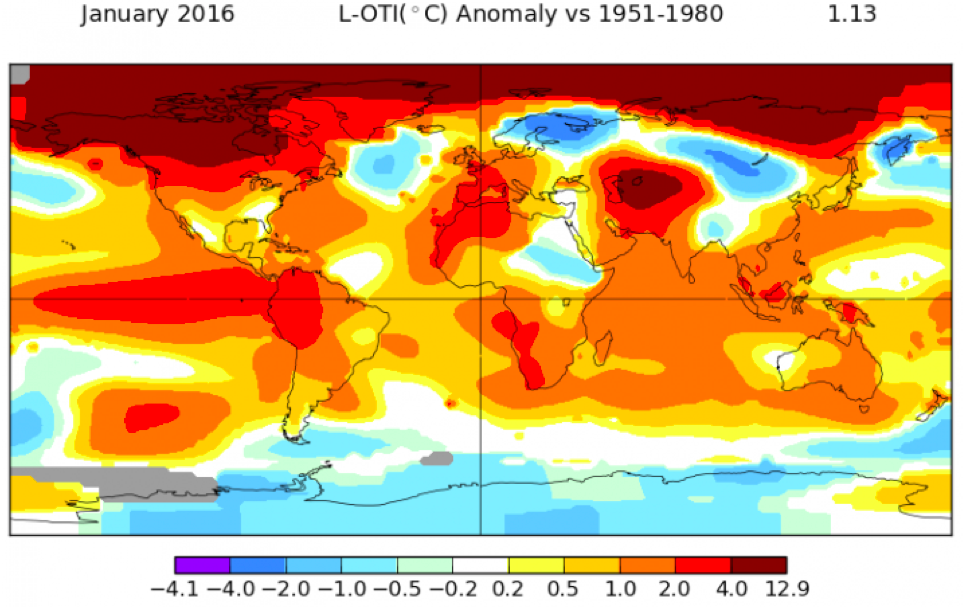This year, winter was on Sunday
In Western Europe the first signs of spring are appearing. Longer daylight hours and warming air temperatures are encouraging flowers, as well as humans, to emerge from their winter slumber. All would seem normal with the world, but our relief at the end of winter doesn’t mask the fact that the deep, hard and cold winter of the past didn’t happen this year, again. A few days of ice and snow, yes, but as an old friend and keen skier, said to me the other day: “This year winter was on Sunday”.
While scientists and policy makers are working to convince themselves, and the wider public, that action to combat climate change is urgently needed, the remarkable 2016 – 2017 winter season has manifested itself foremost in the extreme deviations of the North Pole temperature and limited extension of the pack-ice. The World Meteorological Organisation (WMO) recent report* has shown that this season’s North Pole winter “head-waves” are highly unusual. It is unlikely the North Pole ice will grow to even close to the average extension.
The consequence of this phenomenon is far-reaching. In the absence of a strong difference in winter temperature between mid- and northern latitudes, extreme fluctuations in temperatures and weather patterns are to be expected at mid-latitudes. This is likely to result in warm-air moving north quickly, and cold air coming from the polar-regions heading south rapidly for brief periods, resulting in large swings in weather conditions on a more frequent basis.
The implications for water management are significant, as infrastructure-design is based on average hydrological conditions taking into account certain margins of difference. Dikes are designed and built taking into account the expected frequency of extreme events. Water supply storage is calibrated to match the frequency of replenishing reservoirs and aquifers with water demand. More extreme events, well beyond what is taken into account for infrastructure design, creates major uncertainty and is likely to result in more damage to infrastructure, economies and livelihoods.
The increasing frequency of severe climatic events means we face a difficult and costly recovery and rebuilding every time one of these ‘epics’ takes place. This is where resilience becomes critical. In the face of more frequent and extreme conditions, how are we going to design, build and operate the infrastructure that is fit for purpose? What else is needed to build resilience in relation to water resources and water services management? The latest issue of the IWA’s “The Source” magazine** provides new insights and foresights with its special focus on resilience and updates you on what this means for the water sector.
To be more resilient, water infrastructure development and operations has to take a portfolio approach, combining and aggregating a variety of water supply and demand interventions. This implies first, a need to focus on reducing water use through major water user and allocation efficiency. It requires us to create storage from catchment to user level, both above ground and underground. We need to look at alternative supplies from wastewater re-use, desalination and rainwater harvesting. And we need to replenish aquifers, restore water sources and wetlands: all providing critical support to resilient water management.
The ability of societies to re-bound and re-build is, however, limited. Beyond the infrastructure response, we need natural, technical, social, financial, and political capital to build resilience in the face of growing uncertainty. While this is increasingly understood, our response is not quick enough. The urgency felt by scientists and policy makers needs to be translated into action today: we don’t have ten years to wait.
* http://library.wmo.int/opac/doc_num.php?explnum_id=3414
** https://thesourcemagazine.org/?s=resilience


